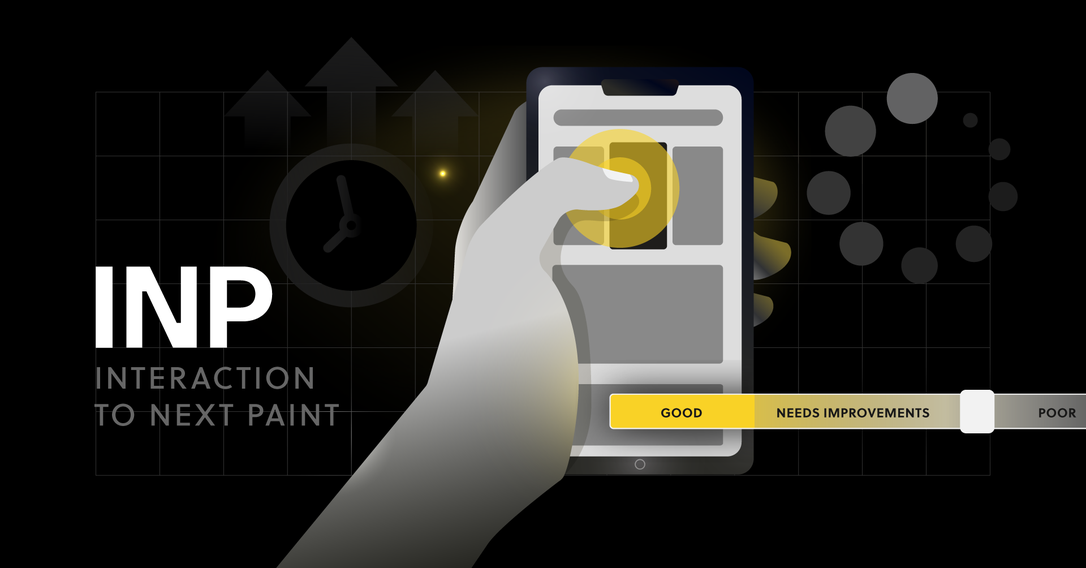14 min
August 13, 2025
Why Do You Need a Team Management Tool in E-commerce?
Success in online retail isn't just about a great product and effective marketing. Let's remember that businesses are built by people and their effective collaboration. If you run an e-commerce operation, an advertising agency, or coordinate a development team responsible for your platform, you've undoubtedly faced an overload of responsibilities, deadlines, and pervasive chaos more than once. Messages disappear, deadlines are merely suggestions, and team members are confused and lost in task distribution. Sound familiar?
In this article, we'll help you unravel the mystery of effective planning. I'll guide you through the world's best work and team management software, and help you choose the applications that perfectly meet your business's needs.
Listen to the audio version of this article.
What are Project Management Tools?
These are applications or software accessible to the entire team, allowing them to more effectively plan, organize, track, and execute projects. They enable easy task coordination and progress analysis, and facilitate collaboration, especially in e-commerce environments where synchronization between departments (e.g., marketing, IT, logistics) is crucial.
For remote work, team collaboration and communication platforms are, in short, a must-have. The right applications for leading a team act as your personal assistant, which organizes tasks, streamlines contact, and allows you to track progress in real-time.
How to Choose the Ideal Tool? Key Evaluation Criteria
Selecting the right application for project execution is an important and strategic decision. When choosing platforms for your business, consider the criteria below.
BTW – some of these applications offer AI-powered solutions, so I refer you to the post: Best AI Tools – Boost Productivity in 2025
Functionality: What Should the Tool Offer?
First, analyze your needs. Each application has its unique solutions and capabilities, fulfilling the needs of various business sectors. So, assess whether it possesses the options that interest you.
Task Management: Do you just need a simple to-do list, or advanced software for team coordination with built-in automation solutions and reporting? Does it allow for easy assignment, prioritization, and tracking of tasks? Can you customize statuses and create templates?
Project View: Does it offer visualizations that help track progress and dependencies between responsibilities?
Automation: Is it possible to automate repetitive tasks, such as assigning tasks, sending notifications, or updating statuses? This is key to efficiency.
Integrations: Does it integrate with your CRM, store platform (e.g., Shopify, Magento, Storyblok), marketing applications (e.g., Google Analytics, SEO tools), or communication apps (e.g., Slack)? This allows you to streamline the entire management process.
Reporting and Analytics: Can you generate reports on team performance, project progress, time spent, or budget? Monitoring metrics is fundamental for optimization.
Documentation Management: Does it allow for easy commenting, chatting, file sharing, and collaborative document editing in real-time? Does it allow for creating and storing important documents, meeting minutes, or knowledge bases that every team member can easily access?
Price: Is the Free Version Enough?
Budget is always an important factor. Many solutions offer various subscription models, as well as free versions. Let's compare free and paid plans. Free formats are great for small teams, but larger companies may need scalable premium plans. So, pay attention to:
Subscription Models: Most tools offer monthly or annual plans, often with discounts for upfront payments.
Free/Freemium Versions: Are the free options sufficient for your needs? Many of them offer the most basic features for free, which is extremely convenient for small teams or for testing.
Hidden Costs: Pay attention to additional modules, user limits, or storage space, which can generate unforeseen costs.
Price Scalability: Does the price grow proportionally to the number of users or required features? Choose a tool that will be flexible as your team grows.
User Interface (UI/UX): Intuition is Key
Even the most advanced tool will be useless if no one wants to use it. Before making a decision, verify:
Ease of Implementation and Learning: Will your team quickly master the new application? An intuitive interface shortens implementation time.
Clarity and Aesthetics of the Interface: Is the UI simple, understandable, and pleasant to the eye?
Availability Across Platforms: Does it work in a browser, on a computer, and on mobile devices? Ideal tools for remote work should be accessible everywhere.
Automation: Saving Time
Automating repetitive processes within a team is a proven way to save time. Tools like ClickUp or Asana, for example, offer a helping hand and allow you to automate task assignments, sending notifications, or status updates. This is an extremely useful function.
From my experience, I can also say that the ability to create templates allows you to work more efficiently and faster. This way, you avoid putting effort into simple, but tedious and repetitive duties that often tire you more than demanding tasks that test our knowledge and creativity.
Scalability: Will It Grow with Your Business?
Small e-commerce stores need simple solutions, but larger companies require those that can handle complex projects. So, check if the software adapts to growing needs.
Security and Support: Data Under Control
Make sure the tool complies with legal regulations and offers robust technical support. Active user forums, documentation, and quick help in case of ambiguities are a must-have. Even the best software can cause problems, and good support is essential.
Availability of Help: Does the manufacturer offer quick technical support, user forums, an extensive knowledge base, and tutorials?
Response Time: How quickly will you receive answers to your questions?
Where is Data Stored?: Are the servers located in the EU?
Compliance with Regulations: Is the tool compliant with GDPR and other data protection regulations?
Top 8 Best Team Management Tools in E-commerce
It's time to take a closer look at specific options that are conquering the market and helping achieve success. Check out the list below and increase your business's work efficiency.
P.S. The order is completely random, we ain't biased here!
ClickUp: Support for Effective Management, Planning, and Collaboration
This is a true "jack-of-all-trades." To quote the meme, "your friend's mom's son," who is talented in every field. From tasks, to projects, to documents and goals. If you're looking for versatile team management software, ClickUp is a great option.
Ideal for planning and tracking marketing campaigns, coordinating logistics processes (e.g., order statuses, return handling), customer service department work, or planning the implementation of new store functionalities. You can create templates and automate repetitive processes.
Who is it for? For practically any team – small startups, large companies, agencies, marketing departments, or product teams. Thanks to its flexibility, it will also work great in e-commerce.
Main advantages: Incredible flexibility and customizability. Offers many views (list, calendar, Gantt chart, mind map), extensive automations, built-in documents (Docs), and even its own email tool. It has a free plan with unlimited tasks, making it attractive for starting businesses. It also features an innovative, AI-powered system.
Potential disadvantages/limitations: Due to the vast possibilities, it can be somewhat overwhelming at first and require time for configuration.
Key features:
Many views: List, board, calendar, Gantt, Box, Mind Map.
Automations: Huge automation capabilities.
Goal and OKR management.
ClickUp Docs: Built-in document editor.
Integrations: Rich set of integrations with popular tools (Slack, Google Workspace, Zoom, and many others).
Estimated prices/free version availability: Free Forever plan with basic options. Paid plans start from approximately $7/user/month (Unlimited plan).
Jira (Atlassian): Task Management Tool for Development Teams
This is the undisputed queen in the IT project world, especially for teams working with Agile methodologies (Scrum, Kanban). Indispensable for implementing new online store versions, code optimizations, managing development backlogs, or tracking and solving technical problems.
Who is it for? Primarily for development and IT teams, but also for other departments (e.g., marketing, product) thanks to Jira Work Management.
Main advantages: Extremely advanced bug tracking features, extensive reporting, powerful workflows, and automations. Excellent integration with other Atlassian tools like Confluence.
Potential disadvantages/limitations: Steep learning curve for beginners. Can be too complicated and more expensive for very small teams or those that don't need such extensive options.
Key features:
Agile project coordination.
Bug and and issue tracking.
Advanced reporting and dashboards.
Configurable workflows.
Integration with Bitbucket, Confluence, and other development tools.
Estimated prices/free version availability: Free plan for up to 10 users. Paid plans start from $7.53/user/month.
P.S. On our blog, you'll also find posts related to IT projects:
Trello: Kanban and Other Ways to Streamline Visualizations
A minimalist, visualization-based tool that simply helps organize work. Excellent for content organization (e.g., blog publication schedule), planning promotional campaigns, managing a task list for the marketing team, or as an inspiration board.
Who is it for? Ideal for small and medium-sized teams that need a simple and intuitive solution for managing tasks, brainstorming, or organizing simple projects.
Main advantages: Incredibly easy to use and intuitive interface. Its visual nature makes task tracking simple and enjoyable. It has a free version with basic features.
Potential disadvantages/limitations: Limited functionality for large, complex projects. Lacks advanced reporting and built-in Gantt charts (unless you use Power-Ups).
Key features:
Kanban boards with cards and lists.
Checklists on cards.
Power-Ups (functionality extensions, e.g., for time tracking, Google Drive integration).
Easy integration with Slack and Google Workspace.
Estimated prices/free version availability: Free plan with basic options. Paid plans from approximately €5.5/user/month.
Asana: An Application for Effective and Simple Task Management
Asana is primarily known for its intuitive interface and versatility. Excellent for coordinating actions between marketing and logistics, planning product creation processes, building SEO strategies, or tracking team work time.
Who is it for? For creative, marketing, product teams, as well as smaller and medium-sized e-commerce businesses that value elegance and simplicity.
Main advantages: Very intuitive user interface, which significantly shortens implementation time. Offers various views (list, timeline/schedule). Facilitates prioritizing tasks and assigning responsibilities.
Potential disadvantages/limitations: Full tool capabilities are only available in paid plans.
Key features:
Task and project management with multiple views.
A wealth of templates to facilitate task management.
Project portfolios for managing multiple initiatives simultaneously.
Integrations with Slack, Google Drive, Microsoft Teams.
Estimated prices/free version availability: Free plan for up to 10 users. Paid plans from approximately €11/user/month.
Slack: No Effective Management Without Good Team Communication
Although Slack is not a typical project application, it has become an indispensable element of teamwork, especially online. It is primarily a communication platform. Indispensable for constant contact between departments, quick response to store problems, brainstorming, or sharing urgent information.
Who is it for? For any team that needs fast and effective communication.
Main advantages: Instant contact option, ability to create thematic channels (e.g., for a specific project, department, client), integrations with hundreds of other management applications (e.g., Jira, Asana, ClickUp, Google Drive), which allows you to receive progress notifications in one place.
Potential disadvantages/limitations: Does not serve to coordinate activities on its own. Can be distracting if clear usage rules are not established.
Key features:
Public and private channels.
Direct messages.
Integrations with project tools, calendars, CRM systems.
Voice and video calls.
Estimated prices/free version availability: Free plan with limited message history. Paid plans start from approximately $7.25/user/month.
Confluence (Atlassian): The Best Projects Are Based on Effective Collaboration and Knowledge Sharing
Used for creating, organizing, and sharing knowledge. It is an ideal knowledge base for the team, often used in synergy with Jira, which I described earlier. Ideal for creating process documentation (e.g., shipping procedures, customer service instructions), specifications for new store features, an employee knowledge base, or strategic meeting minutes.
Who is it for? For teams that need a central place to store documentation, procedures, meeting notes, project specifications, or product databases.
Main advantages: Great for knowledge sharing and content collaboration. Enables collaborative document editing in real-time, versioning, comments. Integrates perfectly with Jira, creating a cohesive ecosystem for managing projects and documentation.
Potential disadvantages/limitations: Can be less intuitive for non-technical users. Without integration with Jira, its full potential is not utilized.
Key features:
Creating and organizing workspaces (spaces).
Collaborative document editing.
Page versioning.
Integrations with Jira, Trello.
Templates for creating various types of documents.
Estimated prices/free version availability: Free plan available for up to 10 users. Paid plans from $5.16/user/month.

Loom: Visual Communication and Quick Instructions Are Key to Success
Loom allows you to record your screen and yourself simultaneously, which greatly streamlines team communication. Although it's not used for project management in the traditional sense, Loom can become an important puzzle piece in a team. Ideal for recording instructions for new employees (onboarding), presenting new store options, giving feedback to developers or designers, or creating short tutorials for customers, Loom works as a supportive tool in any team.
Who is it for? For anyone who wants to quickly and clearly convey instructions, feedback, presentations, or answers to questions, minimizing the need for long meetings or written descriptions.
Main advantages: Extremely easy to use, allows for quick creation and sharing of videos. Reduces the number of meetings and speeds up the information transfer process.
Potential disadvantages/limitations: It is a communication support tool, not comprehensive task management software.
Key features:
Recording screen, camera, or both simultaneously.
Quick sharing of links to recordings.
Comments and reactions to recordings.
Integrations with Asana, Slack.
Estimated prices/free version availability: Free plan with recording length limitations. Paid plans, starting with the Business plan, cost $15/user/month.
Notion: All-in-One – From Tasks to Knowledge Bases
A combination of management, documentation, database, and wiki in one place. It's an ideal solution for e-commerce teams looking for a flexible, "all-in-one" system. It allows for creating a product knowledge base, effectively organizing content campaigns, or coordinating social media publication schedules.
Key features: Kanban boards, databases, documents, calendars, project templates, integrations with Slack and Google Drive.
Advantages: Exceptional flexibility, intuitive interface, ability to create personalized workspaces, free plan for small teams.
Disadvantages: Fewer advanced automation solutions compared to, for example, ClickUp; requires time for configuration for complex projects.
Pricing: Free plan for individual users and small teams, paid from $8 USD/user/month (Plus plan).
Comparing Tools: Table and Checklist
Choosing a project management tool is not an easy decision, but I hope my summary and detailed descriptions have clarified things a bit. Now it's time for practical tips to help you make the final decision.
Selection Checklist:
How large is your company?
Do you need advanced reporting?
Are you looking for a free plan?
What integrations are crucial? (e.g., Shopify, Google Analytics)
Does your team need a simple interface?
Is communication a priority?
| The tool | Main purpose | Pricing | Free version | Key features | Ideal for... |
|---|---|---|---|---|---|
| Jira | Complex IT projects, Agile, tracking errors | $7.53/user/month | Yes (up to 10 users) | Agile, reports, workflows | IT teams, big, developer teams |
| Clickup | Versatile task & project management | $7/user/month | Yes (Free Forever) | Many layouts, automatization, AI | Virtually every team with varied projects |
| Trello | Simple task management, visual workflow | €5.5/user/month | Yes | Kanban boards, Power-Ups | Small and mid-sized teams, simple projects |
| Asana | Intuitive task and project management | $11/user/month | Yes (up to 10 users) | Task layouts, automatizations, schedules | Creative marketing teams, mid-size companies |
| Slack | Team communication, quick info exchanges | $7.25/user/month | Yes | Channels, chat, many intergations | Every team that requires frequent communication |
| Confluence | Knowledge database, documentation, content cooperation | $5.16/user/month | Yes (up to 10 users) | Document editing, versioning | Teams requiring a central knowledge databases |
| Loom | Video communication, instructions, feedback | $15/user/month | Yes | Screen recording, cameras, sharing | Remote teams that require quick |
| Notion | Task coordination | $8/user/month | Yes | Document databases, templates, integrations | Marketing teams in particular |
Choosing the right tool is an investment in your team's productivity.
As you can see, there isn't one single best management system. The ideal coordination software is one that best fits the specifics of your e-commerce business, team size, and the type of projects you undertake. Remember that while these tools help in effective team leadership, people and their commitment are what truly matter. The right application is key to streamlining processes, increasing efficiency, and building a strong, collaborative team capable of meeting all the challenges of the dynamic e-commerce market.
Choosing the right tools is just the beginning. Want your e-commerce to run like a well-oiled machine? Discover the full range of Beecommerce services and see how we can support your business's growth. Click the "Request a quote" button below and start working with us.




